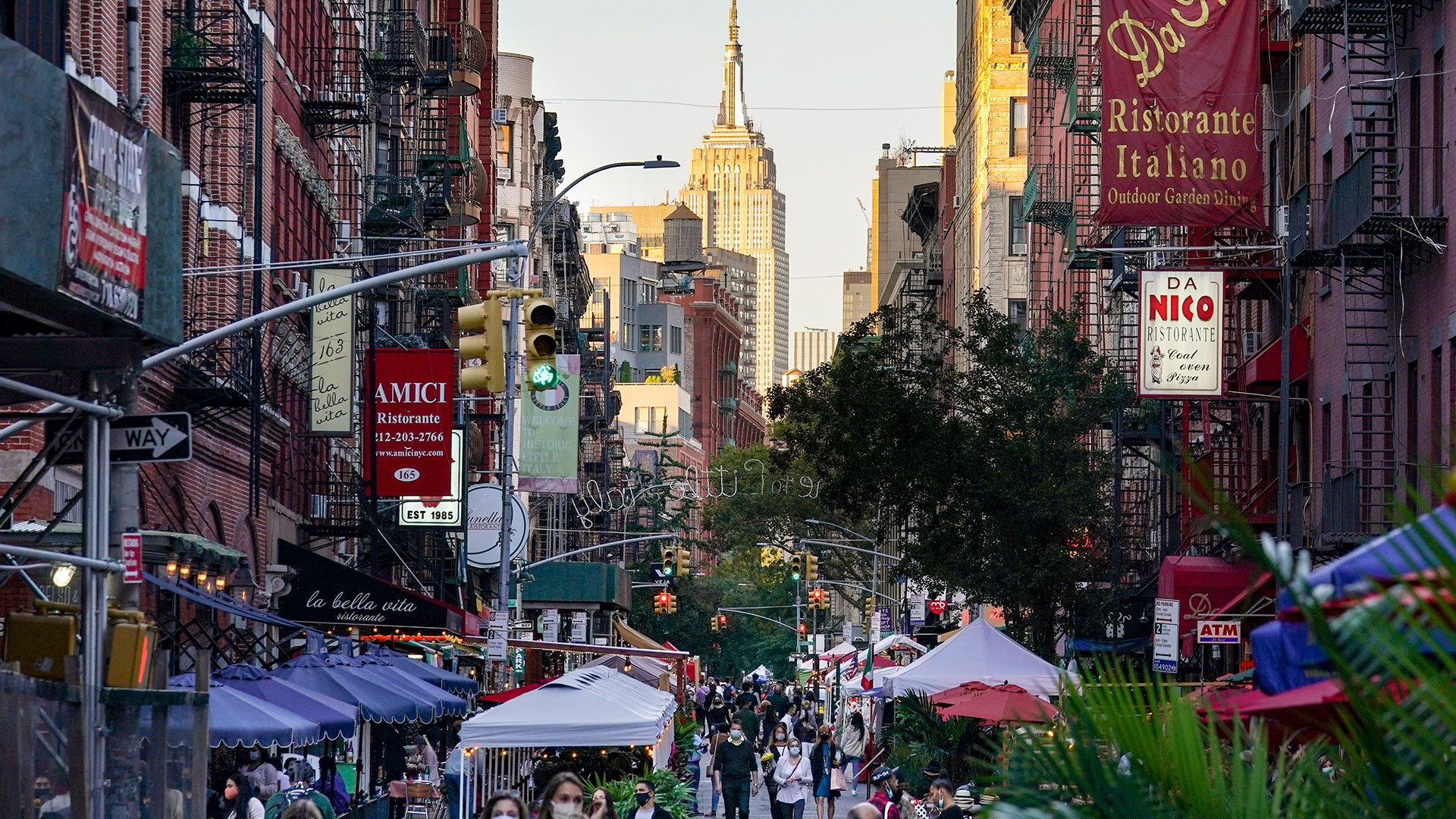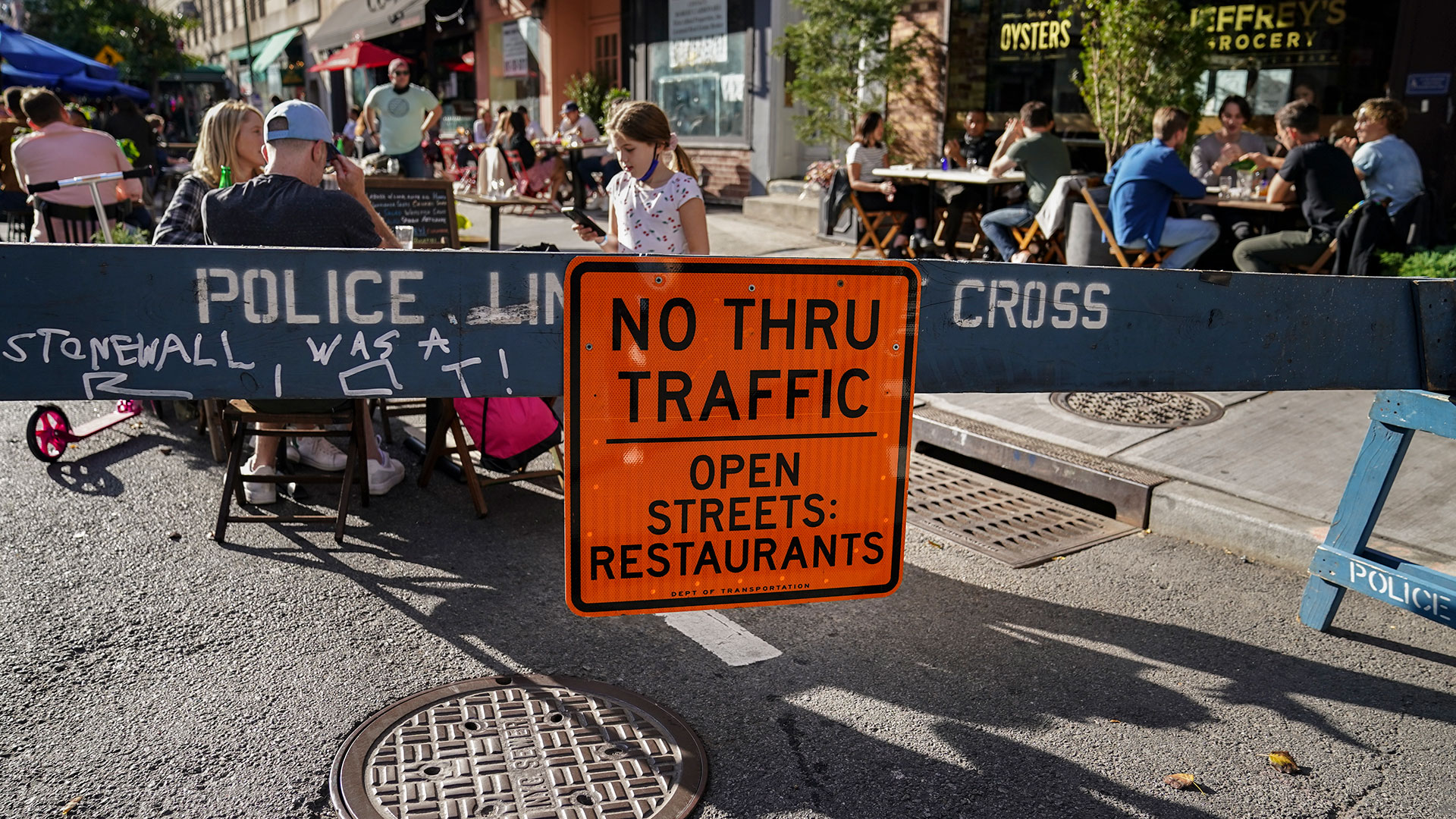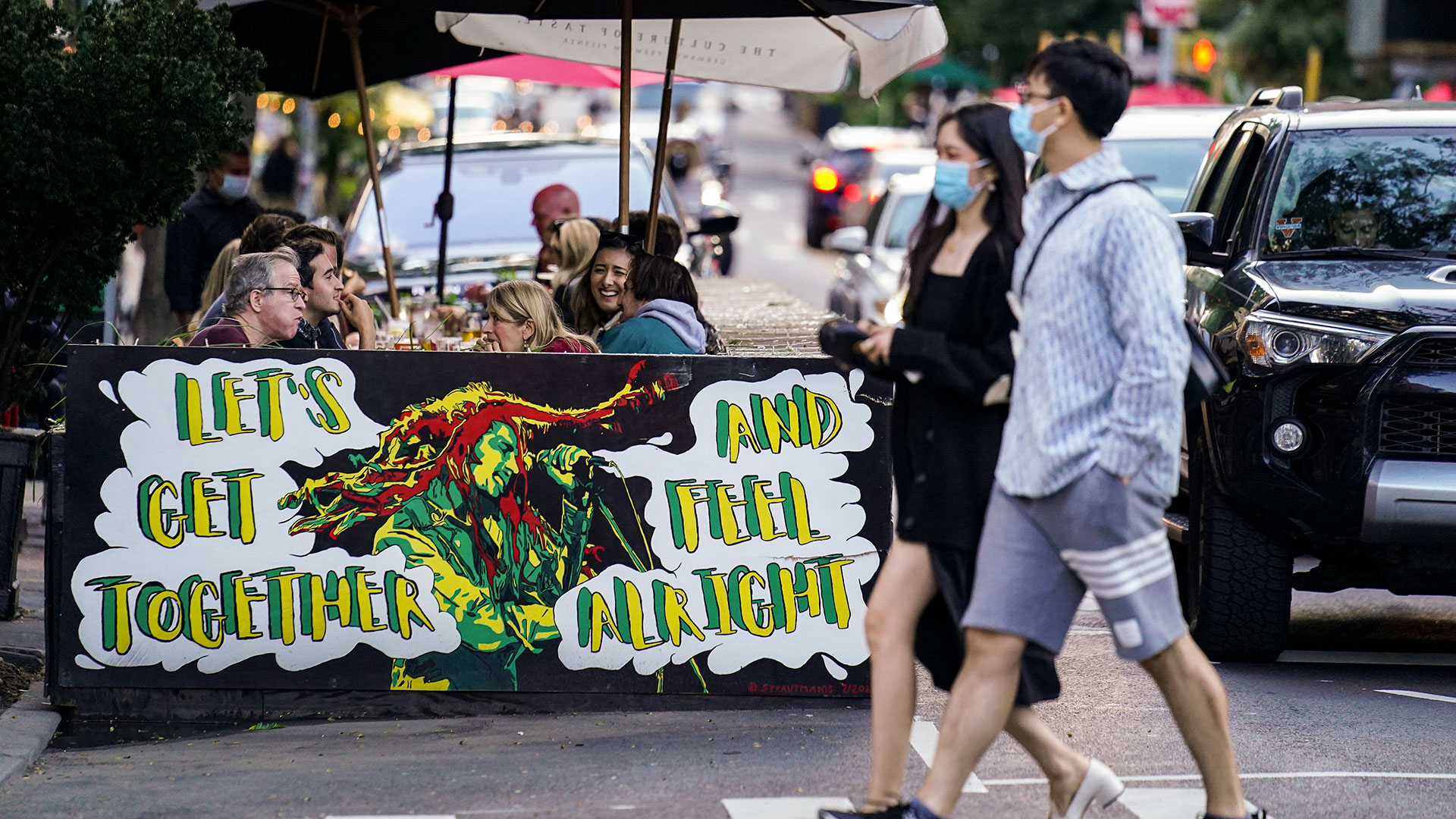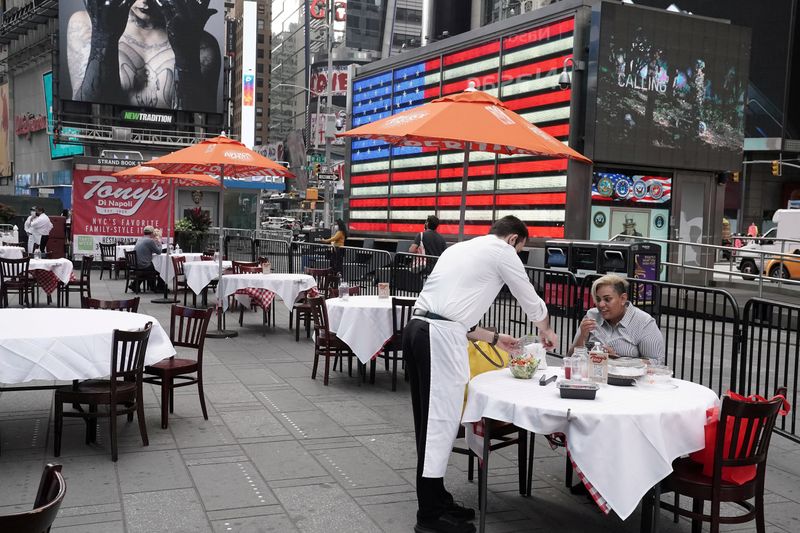As COVID-19 multiplied in New York City, residents worried about the virus who couldn’t get into closed public places poured into the streets, sidewalks and parks. They dined with friends in open-air sheds hastily built by restaurants, and attended health classes, concerts and even therapy sessions on streets closed to traffic.
As the city continues on its road to recovery, the pandemic could be leaving a lasting mark on how the city uses its roads: more room for people and less room for cars.
Even as indoor dining has resumed in the city, without the need for masks or vaccination cards, outdoor dining terraces, set up in former parking lanes, have never been more plentiful.
Meanwhile, the city is expanding its Open Streets program, which closes streets to vehicles and opens them to pedestrians.
The program expansion, originally envisioned as a way to give New Yorkers more space to exercise, is intended in part to increase foot traffic along struggling commercial corridors and provide low-income neighborhoods with similar opportunities. to those of the richest and most high-profile enclaves.

People walk through an area where restaurants operate outdoor dining spaces that extend onto sidewalks and streets as part of ongoing COVID-19 economic impact mitigation efforts, Saturday, Oct. 3, 2020. In New York.
“There have been a lot of closures of things during COVID. There are sections of blocks where there are lots and lots of empty storefronts, and that’s depressing,” said Maura Harway, who lives on Manhattan’s Upper West Side. “So anything that brings people back and helps businesses and helps the neighborhood feel alive and alive.”
The streets of New York, once places where children played stickball, became almost entirely vehicles in the automobile age, except for the occasional summer street fair.
But for years, some city leaders have sought to “reinvent and repurpose the use of our streets,” said city transportation commissioner Ydanis Rodríguez, who wants more neighborhood walks for outdoor gatherings or safe spaces where parents can teach children to skate, shovel, throw a ball, or ride a bike.
“The message to all New Yorkers is that our space is their space, that our streets don’t belong just to car owners,” said the commissioner, who oversees the Open Restaurants and Open Streets programs.
That rethinking started before the pandemic. Two decades ago, former Mayor Michael Bloomberg oversaw a major expansion of bike lanes and allowed bike rental stations to be installed on city streets. He championed pedestrian plazas like Herald Square and Times Square to keep cars out of pedestrian corridors. And his administration expanded greenways and waterfront parks, especially in Manhattan and Brooklyn.

Diners sit outside restaurants that operate outdoor spaces that extend onto sidewalks and streets as part of ongoing COVID-19 economic impact mitigation efforts, Saturday, Oct. 3, 2020, in New York.
Mayor Bill de Blasio followed the example of his predecessor and implemented more measures to control and reduce the speed of vehicular traffic. He also pushed, like Bloomberg, a system that would collect tolls for driving in a large swath of Manhattan.
Spurred on by a car accident that killed a 15-year-old girl in the first days of his term, the current mayor, Eric Adams, vowed to continue “reclaiming space for pedestrians.”
Among the legacies of the pandemic could be rebuilding the city’s food culture by permanently expanding it from the confines of indoor dining to alfresco dining, giving sidewalks a bit of Parisian flair.
Before the pandemic, 1,200 establishments had permits to set up sidewalk tables and chairs. But under the pandemic-era emergency open restaurants program, more than 12,000 restaurants and bars were granted permission to extend service to the streets.
New York City officials and restaurateurs say the outdoor dining cabanas have helped draw diners to restaurant tables and helped save jobs for more than 100,000 workers.

Before the pandemic, 1,200 establishments had permits to set up sidewalk tables and chairs. But under the pandemic-era emergency open restaurants program, more than 12,000 restaurants and bars were granted permission to extend service to the streets.
Carmen Ortiz, who runs Il Violino, an Italian restaurant on the Upper West Side, is counting on the city’s efforts to increase foot traffic to generate more customers after many months of struggle for restaurateurs and their employees.
Ortiz recently returned from a trip to Italy, where he saw many people dining in the sun.
“But most of the people who dined outdoors, they did it on the sidewalks,” he said. “I didn’t really realize they were like in the middle of the street like here.”
For now, the city’s reinvention of alfresco dining keeps changing due to legal challenges from some community activists and residents resisting the loss of parking spaces — at least 8,500 spaces in a city where real estate they have always been a valuable commodity, whether for cars or not.
Critics say the sheds attracted bugs and too many rowdy patrons well into the night, perhaps a sign of recovery for some but an annoyance for others.

Workers build outdoor dining spaces that extend onto sidewalks and streets as part of ongoing COVID-19 economic impact mitigation efforts for restaurants.
“Now we have restaurants in the streets and on the sidewalks,” said Judith Burnett, whose apartment windows face Columbus Avenue, in an area lined with restaurants and will soon be closed to traffic on Sundays.
While he called the initial move to help restaurants a “brilliant way to help people save their businesses,” he is now ambivalent about whether things should stay this way. She doesn’t want traffic to be permanently slowed down, including the buses she rides.
“So much traffic got tangled up,” Burnett said.
City officials say they took those complaints into account when developing new standards.
“Of all the doom and gloom of the pandemic, one of the bright spots is that it’s allowed us to reimagine our relationship with public space, and that’s everything from open restaurants to open streets,” said Andrew Rigie, executive director of the New York City Hospitality Alliance, the trade group for pubs and restaurants.

A waiter serves a customer at an outdoor table at an established restaurant in Times Square, New York.
He called outdoor dining a “natural progression,” accelerated by necessity and allowing New Yorkers to “enjoy the city in a way they perhaps didn’t before the pandemic.”
Upper West Side resident Harway also called it progress.
“I never particularly liked eating on the street in New York before the pandemic. It seemed loud or dirty,” she said. “With everyone eating outdoors in all the restaurants now, it has become more integrated into the life of the city, maybe that’s how it is in Paris or Madrid.”

:quality(85)//cloudfront-us-east-1.images.arcpublishing.com/infobae/CJBJ65SWUFFFPNEETXHS4DGDYY.jpg)